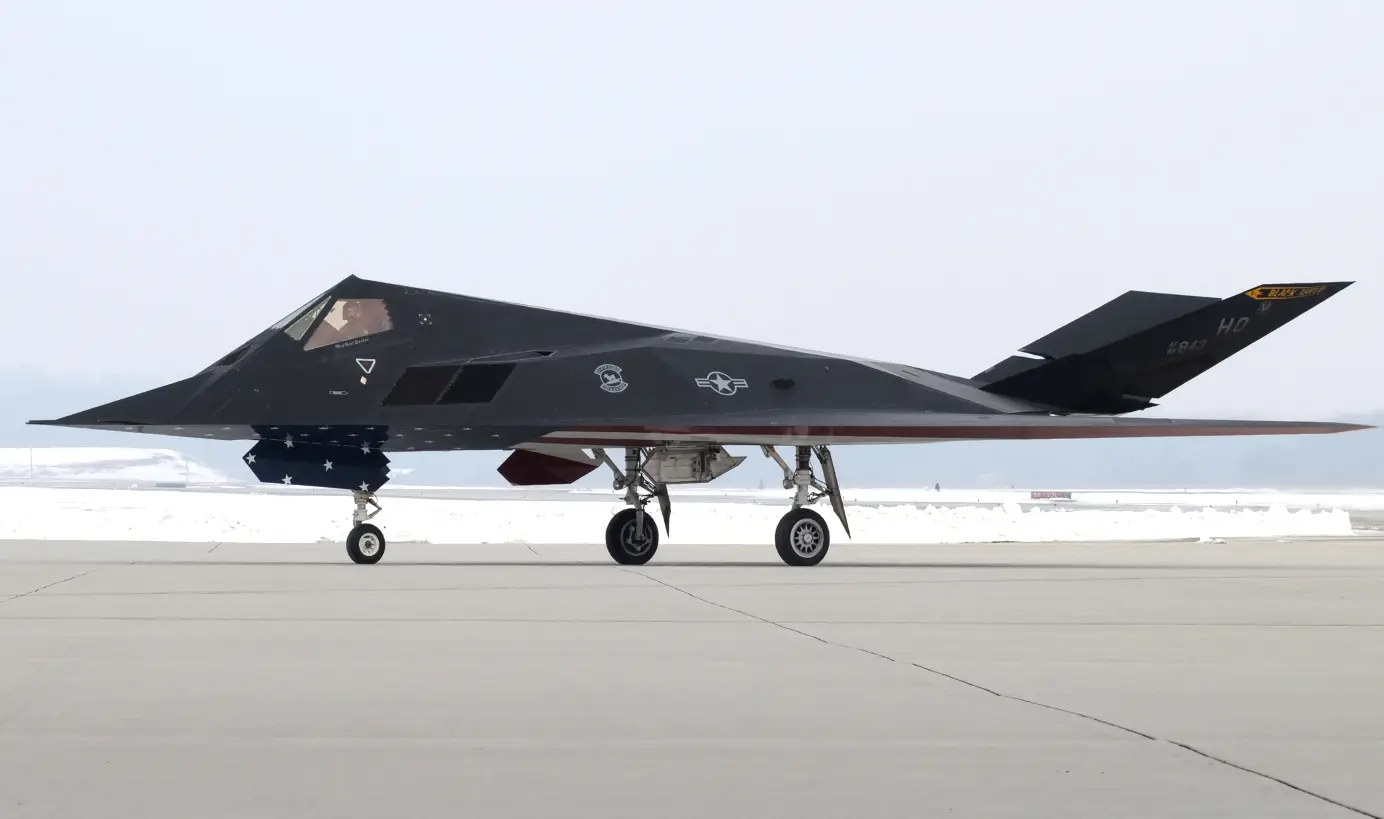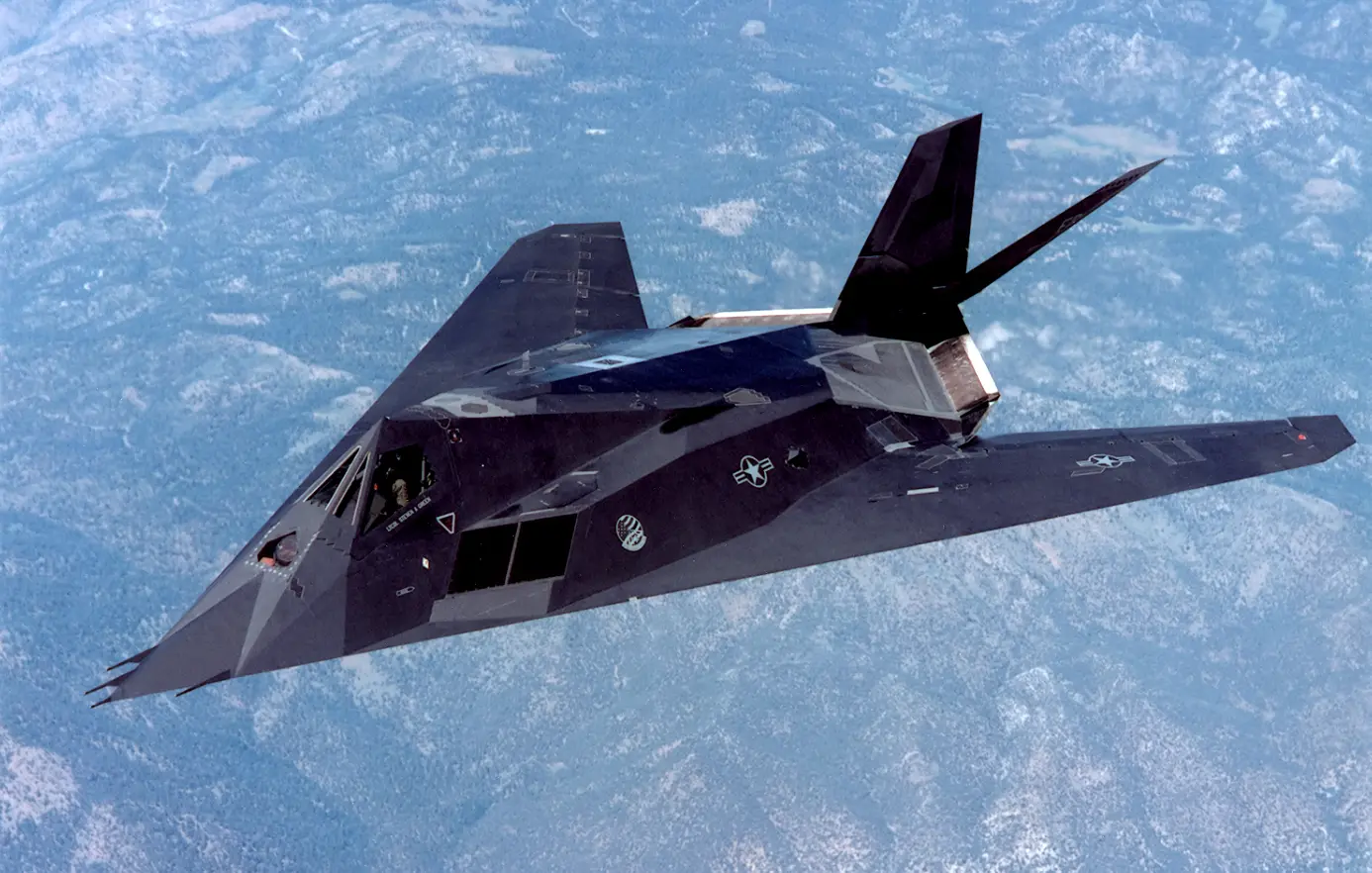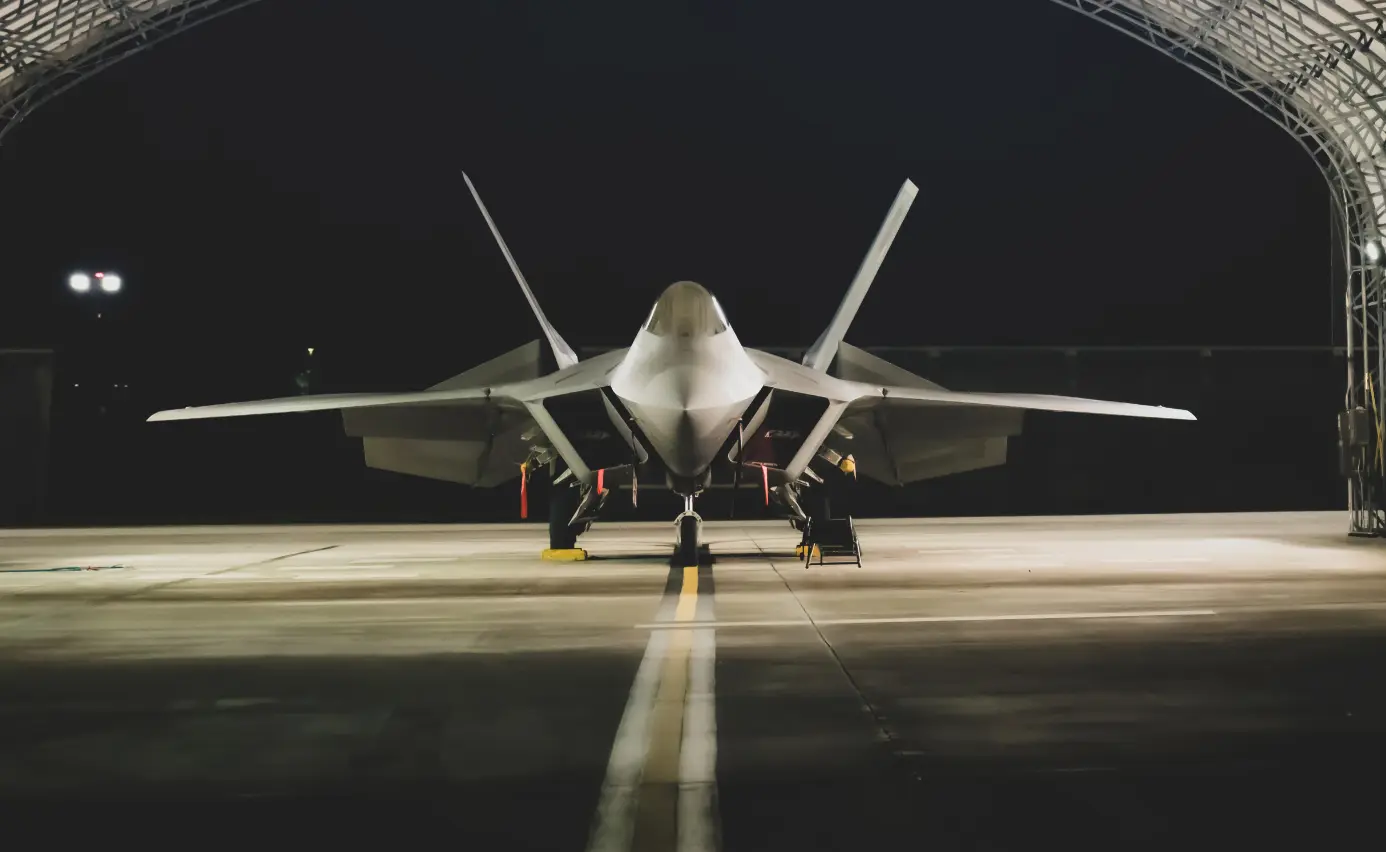
Why Was the F-117 Retired?
With its innovative design and stealth technologies, the F-117 Nighthawk was a pioneer aircraft. So what led to the F-117's retirement?
Table of Contents
The Lockheed F-117 was the first operational American stealth aircraft. It was revolutionary in design and abilities, but why was the F-117 retired?
Despite being one-of-its-kind, the F-117 retired due to technical limitations and the advent of the pricey F-22 Raptor, an aircraft built by Lockheed Martin and introduced on 15 December 2005.
In this article, we'll explore the factors that led to the development of the Lockheed F-117 and why it eventually retired.
When Was the F-117 Nighthawk Introduced?
The F-117 was a US stealth fighter aircraft that flew for the first time on 18 June 1981. Because the F-117 was the first functional stealth fighter, its position in war history is sound.
The aircraft entered service in October 1983 and was decommissioned twenty-five years later, in April 2008. It served the United States Air Force in various combat settings, such as the Yugoslavia Wars, throughout which it had a key role.
The F-117 Nighthawk is, without a doubt, among the most iconic stealth fighters in war history. It featured a modern futuristic design that, along with its stealth qualities, made it the most technologically advanced fighter jet of its day.

Lockheed presented an F-117 variant to the United States Navy in 1984, dubbed the F-117 "Seahawk", that would operate on aircraft carriers. However, the Navy rejected the concept in the early nineties as they found it unsuitable for carrier use.
Lockheed attempted again a few years later, proposing an F-117B variant, which could act as a multi-purpose jet. However, this variant was also rejected by the United States Air Force and the British Royal Air Force, who also got the offer to buy the plane.
What Sets the F-117 Apart From Other Aircraft?
Its unusual shape facilitates stealth qualities, which means the aircraft can deflect radar emissions to stay hidden from hostile radars.
The F-117 Nighthawk was so vital to the United States Military that it was not revealed to the general public until 1988. It received much public attention when it participated in the Gulf War in 1991. Despite being described as a stealth fighter, its primary function in combat was ground attack.
Due to its many edges, angles, and flat surfaces, the F-117 Nighthawk is aerodynamically unstable in all three of the aircraft's primary axes. The F-117 Nighthawk requires continual flight corrections from a fly-by-wire control system to sustain controlled flight.

Other penalties from its angular shape were a low wing aspect ratio and a high wing sweep angle needed to divert incoming radar waves to the sides. Both impacted the aircraft's stability negatively. In addition, engine intake and outlet limits (due to the aircraft's design) resulted in a lower engine thrust, and the lack of an afterburner meant the F-117 was limited to subsonic speeds.
Shootdown Over Yugoslavia
During the Yugoslavian conflict in 1999, a Yugoslav military unit shot down an F-117 by launching an S-125 Pechora surface-to-air missile. Pilot Lt. Col. Darrell Patrick Zelko ejected safely and was later rescued.
The Yugoslavs launched multiple missiles at around 8:15 p.m. on 27 March 1999. Pilot Zelko observed two missiles heading towards his F-117. The first missile passed over his aircraft without detonating, but the second missile exploded near his F-117. The shockwave and shrapnel from the blast severely damaged his aircraft and threw it out of control.
Zelko ejected the F-117 and landed in a field south of Ruma, where he quickly hid in a drainage ditch. Yugoslav soldiers, local police, and villagers initiated an intense search for him.
A US Air Force combat search and rescue team rescued Zelko about eight hours after the crash. He later learned that the searchers came within a few hundred meters of his hiding spot, meaning he was potentially minutes away from capture.
How could the Yogoslavs shoot down an advanced stealth aircraft like the Lockheed F-117? According to US Air Force Aerospace Engineer Chris Morehouse, this is due to a combination of several different things. The Air Force had used the same predictable routes several times, and crucial electronic warfare support aircraft had been grounded. In addition, the F-117 had opened its bomb bay doors, making it easier to see on radar.
Why Was the F-117 Retired?
The rationale for retiring the F-117 is due to intrinsic design flaws and the advent of new weaponry technologies designed to take the place of Nighthawks.
The Advent of the F 22 Raptor
After 25 years of service with the United States Air Force, the F-117 was officially retired in 2008. The causes for its retirement were somewhat evident, but they also raised some uncertainties. It is widely assumed that the fighter plane was decommissioned due to the coming of the pricey F-22 Raptor.
While the F-117 was flying combat missions over Yugoslavia in the nineties, the United States Air Force covertly started development on another revolutionary Lockheed-made stealth fighter, the F-22 Raptor. The F-22 is a genuine air dominance fighter, packing air-to-air missiles, a 20-millimeter Vulcan gun, and the ability to carry air-to-ground missiles. It is also capable of much higher speeds than the F-117, which is essential for fighter aircraft.

The F-22 Raptor remains one of the world's most powerful stealth aircraft. However, it brought a high cost to the United States Air Force, with each unit costing around $377 million, including development and production spending.
The F-22 Raptor's primary function is to serve as a tactical air superiority fighter. Even if the F-117 was technically designated a fighter, the US Air Force primarily used it for ground attacks. And this is the problem in explaining why the F-22 substituted the F-117. How could the F-22 replace the F-117 if they serve distinct functions on the battlefront?
The F-22 is primarily a fighter, whereas the F-117 served as a ground-attack stealth aircraft in its conflict deployments. But the F-22 Raptor also has ground attack capabilities. As a result, the most logical explanation for the F-117's decommissioning is its aging and the F-22's better and more wide-ranging abilities.
Technical Reasons That Led to the F-117's Retirement
The F-117's stealth technology prioritized a reduced radar cross-section above aerodynamics. As mentioned, the F-117 was an unstable aircraft due to its unusual design. It needed near-constant control adjustments from its various fly-by-wire flight systems to stay in control.
It also had technical constraints. The F-117 did not have its own radar. An onboard radar would be detectable to the enemy through its emissions and shape, potentially giving away the stealth advantage of the F-117. The lack of an afterburner limited its speed, and the bomb bays only had space for two bombs in total.
Even though the F-117 was a great "first version" of future stealth fighter aircraft, its shortcomings ultimately jeopardized its long-term usefulness.

Wrapping It Up
In this article, we looked at why the F-117 was retired and the features that made it revolutionary.
The F-117 retired mainly because of two overall tendencies. First of all, the aircraft had aged, and its technical shortcomings became more and more apparent. Second, the F-22 introduced several new technologies over the F-117 Nighthawk and enhanced the fighter aircraft's stealth performance. The F-22 is so advanced that the US prohibits exporting it to safeguard its superior performance and stealth technology.
But even though the F-117 retired years ago, the aircraft could still be observed soaring through the skies of the United States.
Planenerd Newsletter
Join the newsletter to receive the latest updates in your inbox.






